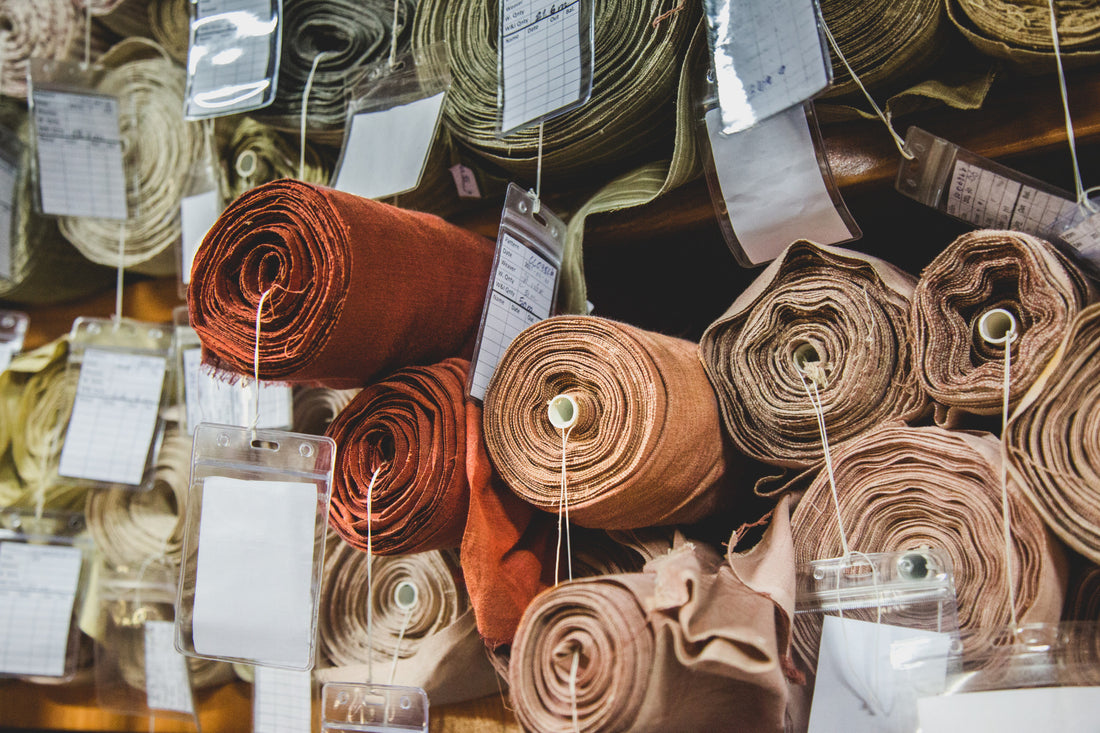Are you sacrificing your health for the sake of fashion? The toxins in your clothing could be making you sick. 80% of women suffer from hormone imbalances with 70% unaware of conditions such as polycystic ovary syndrome (PCOS).
But can our clothes affect our hormone health? There are harmful chemicals used in the manufacturing process that could be putting our health and wellbeing at risk. Manufacturers use these chemicals to make items stain-resistant, waterproof, wrinkle-free, and mildew-resistant.
So how can you choose clothes that protect your health and wellbeing? Here is what you need to know about how fabrics affect hormone health.
Are There Toxins in My Clothes?
The majority of clothing contains chemicals to improve the functionality of the garment. Even natural fibres such as cotton, hemp, and bamboo may contain pesticides. Over 8,000 synthetic chemicals are used during the manufacturing process.
Many clothing items also contain plastics such as polyester, nylon, and acrylic. 64% of new clothing items contain plastic. A little black dress made of plastic materials can release microplastics each time you wash it.
Exposure to these chemicals can cause skin irritation, breathing problems, and allergic reactions.
How Toxins Can Affect Hormone Health
The foods we eat and the clothes we wear can have a huge impact on our hormone health and wellness. If our liver has to deal with too many toxins it can be difficult for our body to detoxify our system. This toxic overload can cause hormonal imbalance.
Some of the foods that cause hormonal imbalance include red meat, caffeine, dairy products, and processed foods. Fruits such as blueberries and apples can help you manage hormonal imbalance.
Exposure to endocrine disrupting chemicals (EDCs) can cause hormonal imbalance. EDCS can also affect fertility and reproductive health. Some of the major symptoms of hormone imbalance can include:
- Fatigue
- Weight Gain
- Infertility
- Muscle Pain
- Low Libido
- Headaches
- Irregular Periods
There are several things you can do to prevent hormonal imbalances such as avoiding toxins and drinking plenty of water. We can also avoid clothing that contains hazardous chemicals.
What to Look For in Fabrics
The good news is that there are ways to identify fabrics that could harm the environment and your health. Choose natural materials such as cotton, bamboo, or hemp which are better for the environment and hormonal health. Materials such as polyester can release harmful emissions during the production process and damage the environment.
Check the label before you buy a product and look for the following chemicals.
Flame Retardants
Flame retardant chemicals are added to clothing to prevent or slow the spread of fire. A study revealed that 90% of Americans had a trace of flame retardant chemicals in their urine. Many of these chemicals have links to cancer, endocrine disruption, and cognitive function in children.
Brominated items can cause hormonal irregularities by overstimulating the adrenal gland. Children and babies are at risk of exposure to flame retardant chemicals on bedding, toys, and furniture. Check the label of any clothing you are buying to see if it is treated with flame retardant chemicals.
Azo Dyes
Azo dyes are a collection of synthetic dyes used by the textile industry. These dyes help to colour clothing and leather. They are potentially harmful chemicals that could cause damage to the environment and human health.
Many garment factories have polluted rivers and waterways by using hazardous chemicals and dyes. 70% of the rivers in China are polluted due to garment production. Azo dyes are also linked with liver and bladder cancer.
Waterproofing
Water-resistant clothing can contain poly fluoroalkyl substances (PFAS). These chemicals can stay in the environment for thousands of years. PFA chemicals can cause liver damage, developmental issues, and kidney cancer.
Phthalates
Phthalates can cause damage to the liver, lungs, and female reproductive system. They are a family of endocrine disrupting chemicals that can affect the reproductive system. You can find phthalates in clothing, personal care products, and vinyl flooring.
Leather Tanning
Formaldehyde and arsenic are a part of the leather finishing process. These chemicals can cause problems with the lymphatic system. Chromium tanned leather is the most toxic leather tanning process.
Leather tanning also poses a threat to the workers who are handling the chromium. Chromium can irritate the lungs and cause respiratory issues. The health of workers and the environment are put by the wayside in the production of leather.
Vegetable tanned leather is often considered better for the environment and health.
Formaldehyde
Formaldehyde is a known carcinogen in various countries. It is used to create wrinkle-resistant clothing and is often associated with a new clothing smell. Many people are sensitive to formaldehyde and can experience skin irritation when exposed to it.
Garments that are labelled as stain-resistant, wrinkle-free, or iron-free will contain formaldehyde. Many babies and children's products contain small amounts of formaldehyde. Formaldehyde can be harmful to the skin and release pollutants into the air in your home.
Synthetic Fabrics
Synthetic clothing that is designed for fitness can cause various health problems. Garments that claim to hide sweat and stains or boost performance will contain a long list of toxic chemicals. Poly- and per-fluorinated chemicals (PFCs) are some of the poisonous chemicals that could be lurking in your workout clothing.
Your absorption rate rises when you sweat which means your skin will absorb harmful chemicals quicker when you workout.
Choose Natural and Sustainable Fashion
Choosing eco-friendly, slow fashion could be the best way for you to protect your hormone health. Cut toxins and dangerous chemicals out of your closet by selecting high-quality, plant-based materials such as cotton and rayon. Natural fibres such as cotton are better for your skin and also for the planet.
Do you want to learn more about sustainability and slow fashion from an authentic Australian designer? Are you searching for stunning tropical summer prints inspired by Australia? Check out our range of sustainable and unique pieces at Wallis and Jazz.

